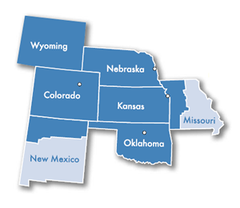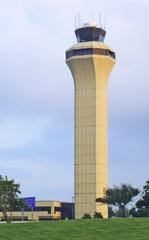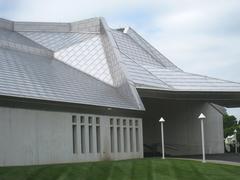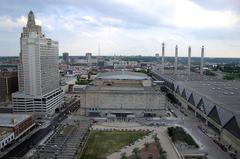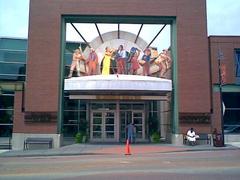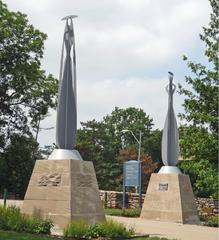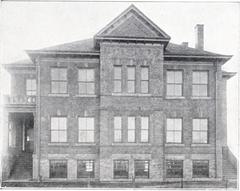Visiting Town of Kansas Bridge: Hours, Tickets, and Tips
Date: 31/07/2024
Introduction
The Town of Kansas Bridge in Kansas City, Missouri, is a landmark that stands as a testament to the city’s rich history and cultural heritage. Located on the Kansas City Riverfront Heritage Trail, this bridge not only provides a critical transportation link but also offers visitors a glimpse into the town’s early days and its pivotal role in the development of the region. Originally inhabited by Native American tribes such as the Kansa (Kaw) and Osage, the area began to attract European-American settlers in the early 1800s due to its strategic location at the confluence of the Kansas and Missouri Rivers. Officially founded in 1838, the Town of Kansas quickly became a hub for trade and transportation, particularly with the advent of steamboats in the 1840s (kcrivertrails.org).
The bridge itself, constructed in the late 19th century, was instrumental in facilitating the movement of goods and people across the Missouri River, further cementing Kansas City’s role as a key transportation hub. Today, the Town of Kansas Bridge is an integral part of the Kansas City Riverfront Heritage Trail, providing a safe route for pedestrians and cyclists while offering stunning views of the Missouri River and surrounding areas (Travalour, KCUR).
This guide aims to provide a comprehensive overview of the Town of Kansas Bridge, covering its historical background, architectural significance, cultural impact, and practical visitor information. Whether you’re a history buff, a nature enthusiast, or simply looking for a scenic spot to explore, this guide will help you make the most of your visit.
Table of Contents
Historical Background
Early Settlement and Founding
The Town of Kansas, which later evolved into Kansas City, Missouri, has a rich history that dates back to the early 19th century. The area was initially inhabited by Native American tribes, including the Kansa (Kaw) and Osage tribes. European-American settlers began to arrive in the early 1800s, attracted by the strategic location at the confluence of the Kansas and Missouri Rivers. This location was ideal for trade and transportation, which played a crucial role in the town’s early development.
In 1838, the Town of Kansas was officially founded. The town quickly became a hub for trade, particularly in fur and other goods, due to its advantageous position along the river. The Missouri River was a vital artery for transportation, and the town’s location allowed it to serve as a key point for westward expansion.
Development and Growth
The mid-19th century saw significant growth and development in the Town of Kansas. The arrival of steamboats in the 1840s revolutionized trade and transportation, making the town an essential stop for goods moving up and down the Missouri River. The town’s economy flourished, and its population grew rapidly.
One of the most significant developments during this period was the construction of the first paved street in the Town of Kansas, which can still be seen today in River Bluff Park. This paved street was a testament to the town’s growing importance and its commitment to infrastructure development.
The Role of the Town of Kansas Bridge
The Town of Kansas Bridge, constructed in the late 19th century, played a pivotal role in the town’s development. The bridge allowed for easier movement of goods and people across the Missouri River, further solidifying the town’s position as a key transportation hub. The bridge also provided a critical link between the town and the surrounding areas, facilitating trade and commerce.
Today, the Town of Kansas Bridge is an integral part of the Kansas City Riverfront Heritage Trail. The bridge allows users of the trail to cross several active railroad tracks and a levee system, providing a safe and convenient route for pedestrians and cyclists. The bridge also offers stunning views of the Missouri River and the surrounding area, making it a popular spot for visitors.
Historical Significance
The Town of Kansas holds significant historical importance, particularly in the context of westward expansion and the development of the American frontier. The town was a key stop for pioneers heading west, and it played a crucial role in the trade and transportation networks of the 19th century.
The town’s historical significance is further highlighted by its connection to the Lewis and Clark Expedition. The expedition, which took place from 1804 to 1806, was a pivotal moment in American history, and the Town of Kansas was one of the stops along the way. Today, visitors can explore the Lewis & Clark Kaw Point Park, located at the confluence of the Kansas and Missouri Rivers, which serves as a reminder of this important historical event (kcrivertrails.org).
Archaeological Potential
Despite its rich history, much of the Town of Kansas remains unexplored from an archaeological perspective. There is significant potential for archaeological studies to uncover more about the town’s early history and its development over the years. The Town of Kansas Bridge provides an excellent vantage point for observing the area and considering its archaeological potential.
Public Art and Historical Markers
The Town of Kansas Bridge and the surrounding areas are adorned with public art and historical markers that help visitors appreciate the town’s history. These markers provide information about the town’s early days, including its role in trade and transportation, and the engineering feats required to cross the Missouri River.
One notable piece of public art is the depiction of the dugout canoes used by the Lewis and Clark Expedition, located in River Bluff Park. This artwork serves as a reminder of the town’s connection to this significant historical event and its role in the broader narrative of American history (kcrivertrails.org).
Visitor Tips
For visitors looking to explore the Town of Kansas Bridge and its historical significance, here are some tips:
- Parking: There is a variety of on-street and off-street parking available near the trail, making it easy for visitors to access the bridge and the surrounding areas.
- Trail Access: The Town of Kansas Bridge is part of the Kansas City Riverfront Heritage Trail, which offers a scenic route along the riverfront. The trail is suitable for both pedestrians and cyclists and provides access to several historical sites and parks.
- Historical Markers: Take the time to read the historical markers and public art installations along the trail. These markers provide valuable insights into the town’s history and its role in the development of the region.
- Scenic Views: The Town of Kansas Bridge offers stunning views of the Missouri River and the surrounding area. Be sure to bring a camera to capture the beautiful scenery.
- Archaeological Potential: Keep an eye out for potential archaeological sites in the area. While much of the town’s history remains unexplored, there is significant potential for future discoveries.
Modern-Day Significance
Today, the Town of Kansas Bridge and the surrounding areas continue to hold significant historical and cultural importance. The bridge is a key part of the Kansas City Riverfront Heritage Trail, which connects various historical sites and parks along the riverfront. The trail provides a unique opportunity for visitors to explore the history of the area while enjoying the natural beauty of the Missouri River.
The Town of Kansas Bridge also serves as a reminder of the town’s early days and its role in the development of Kansas City. The bridge and the surrounding areas are a testament to the town’s rich history and its ongoing importance in the region.
FAQ
Q: What are the visiting hours for the Town of Kansas Bridge?
A: The Town of Kansas Bridge is accessible 24/7 as part of the Kansas City Riverfront Heritage Trail. However, it is recommended to visit during daylight hours for safety and to fully appreciate the scenic views.
Q: Are there any ticket prices to access the Town of Kansas Bridge?
A: There are no ticket prices to access the Town of Kansas Bridge. It is free and open to the public.
Q: What are the nearby attractions?
A: Nearby attractions include the Lewis & Clark Kaw Point Park, River Bluff Park, and various historical markers along the Kansas City Riverfront Heritage Trail.
Q: Is the Town of Kansas Bridge accessible?
A: Yes, the Town of Kansas Bridge is accessible to both pedestrians and cyclists. The trail is well-maintained and suitable for visitors of all ages.
Conclusion
The Town of Kansas Bridge is more than just a historical landmark; it is a gateway to understanding the rich history and cultural significance of Kansas City. Whether you’re interested in the town’s early settlement, its role in trade and transportation, or simply want to enjoy a scenic walk along the Missouri River, the Town of Kansas Bridge offers a unique and enriching experience. Plan your visit today and explore the many historical wonders this area has to offer.
Call to Action
For more information on visiting the Town of Kansas Bridge and other historical sites in Kansas City, download our mobile app Audiala, check out related posts on our website, or follow us on social media for the latest updates.


